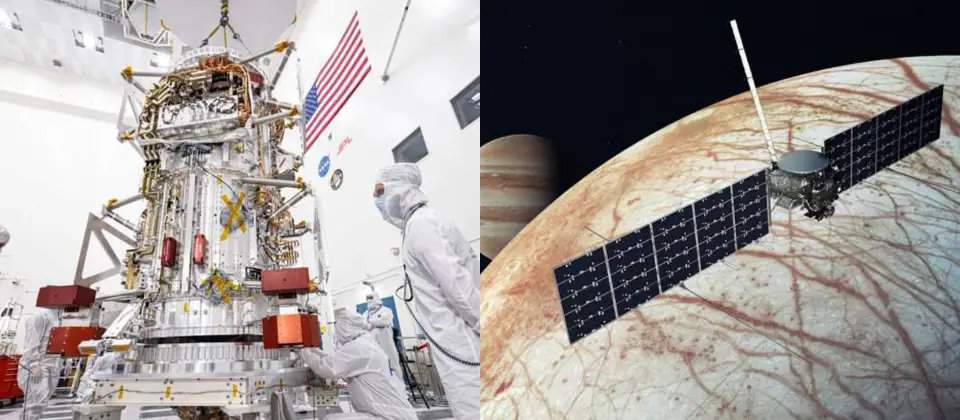A group of researchers recently studied the possibility of using aerographite as a material for solar sail to reach Mars and beyond, Universe Today reports. Scientists from the Planetary Society have already demonstrated the LightSail 2 mission during which they raised a small CubeSat’s orbit by 1.9 miles (3.2 Km) using the propulsive force of photons, or light beams from the Sun. Scientists recently submitted to the journal Acta Astronautica revealing how they simulated trips to Mars and to Interstellar space using aerographite solar sails.
How the scientists are planning for Interplanetary and Interstellar Solar Sail Missions
The scientists commenced with this research by simulating the speed of solar sails developed with aerographite. They modeled the solar sail spacecraft with a mass of about 2.2 pounds (1 kilogram), which also includes a cross-sectional area of 1,119 square feet (104 square meters) and 25 ounces (720 grams).
The team calculated the speed at which solar sails could possibly reach Mars and the heliopause which is also interstellar medium. To get an accurate measurement of the speed, they simulated two different trajectories from Earth, known as direct outward transfer and inward transfer methods for each of the journeys to deep space.
The Science Behind the Direct Outward Transfer and Inward Transfer Methods
During the study, the direct outward transfer method for the spaceflight to Mars and the interstellar medium involved the solar sail deploying and moving away from a polar orbit around Earth. The inward transfer method involves the solar sail spacecraft flying into space by a traditional launch vehicle to a location of about 0.6 astronomical units (AU) from the Sun.
While analyzing the two methods, the scientists discovered that the direct outward transfer method enables a solar sail spacecraft to reach Mars in only 26 days. On the other hand, a spacecraft using the inward transfer method would get to the red planet in about 126 days. However, 103 days out of the 126 days would be exhausted on the duration it takes the traditional rocket to get to its deployment region.
Unlike Mars, the journey to the heliopause would take the inward transfer method about 4.3 years to accomplish, while the outward transfer method will take about for 4.2 years to get to the heliopause. The outward transfer method would take about 103 days trip before deployment.
However, it stands the chance of reaching the heliosphere much faster because solar sail attains its maximum speed at 300 days. On the other hand, using the outward transfer method would take the spacecraft about two years to attain its maximum speed. Scientists behind this research suggest that the solar sails would be able to get to such great distances since their material would be developed using aerographite.
What Scientists think about this innovative technology

During an interview with Universe Today, the study lead author Julius Karlapp, a research assistant at the Dresden University of Technology shared his opinion about the study.
“With its low density of 0.18 kilograms per cubic meter, aerographite undercuts all conventional solar sail materials,” Karlapp said. “Compared to Mylar (a metalized polyester foil), for example, the density is four orders of magnitude smaller,” he continued. “Assuming that the thrust developed by a solar sail is directly dependent on the mass of the sail, the resulting thrust force is much higher. In addition to the acceleration advantage, the mechanical properties of aerographite are amazing.”
The team behind the study also suggest that solar sails would be able to carry an extremely small amount of payloads while making its journey to Mars or the Heliopause.
“Solar sail propulsion has the potential for rapid delivery of small payloads (sub-kilogram) throughout the solar system,” Dr. René Heller, an astrophysicist at the Max Planck Institute for Solar System Research and a co-author on the study, revealed to Universe Today. “Compared to conventional chemical propulsion, which can bring hundreds of tons of payload to low-Earth orbit and deliver a large fraction of that to the Moon, Mars, and beyond, this sounds ridiculously small,” Heller continued. “But the key value of solar sail technology is speed.”
As the Planetary Society has successfully demonstrated a functional solar sail, the organization is hoping to partner with NASA and other agencies to work on future light sail missions. NASA is seriously working on launching a Solar Cruiser mission to investigate the Sun with the aid of solar sail spacecraft in February 2025. The outcome of this mission will determine the future of solar sail spacecraft in exploring deep space.
Conclusion
Scientists from the Planetary Society conducted a study that reveals the possibility of using aerographite as a material for the solar sail to reach Mars and beyond. The outcome of this study will actually change the way solar sail spacecraft will be developed in the future. What do you think about this fascinating discovery? Also, check out these trending space gifts for your loved ones.




